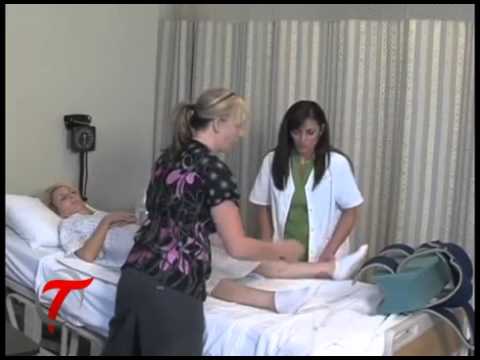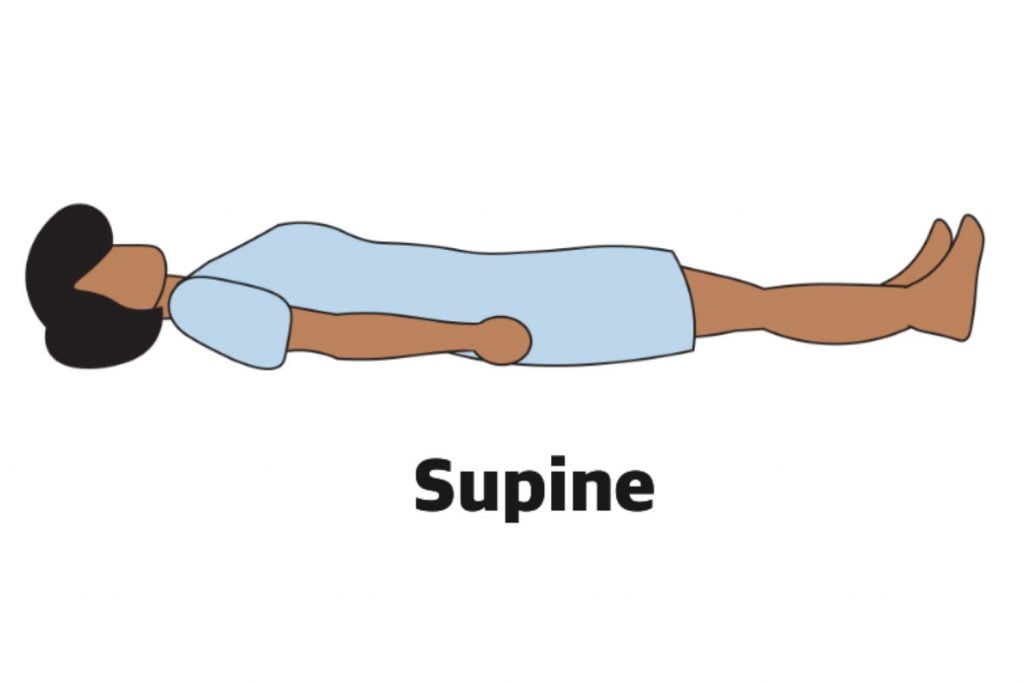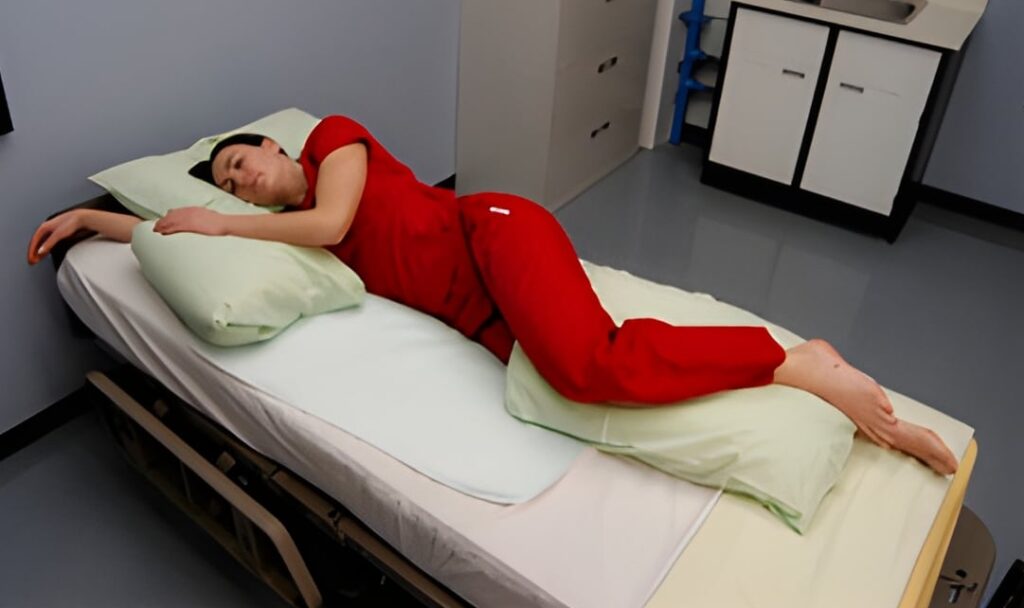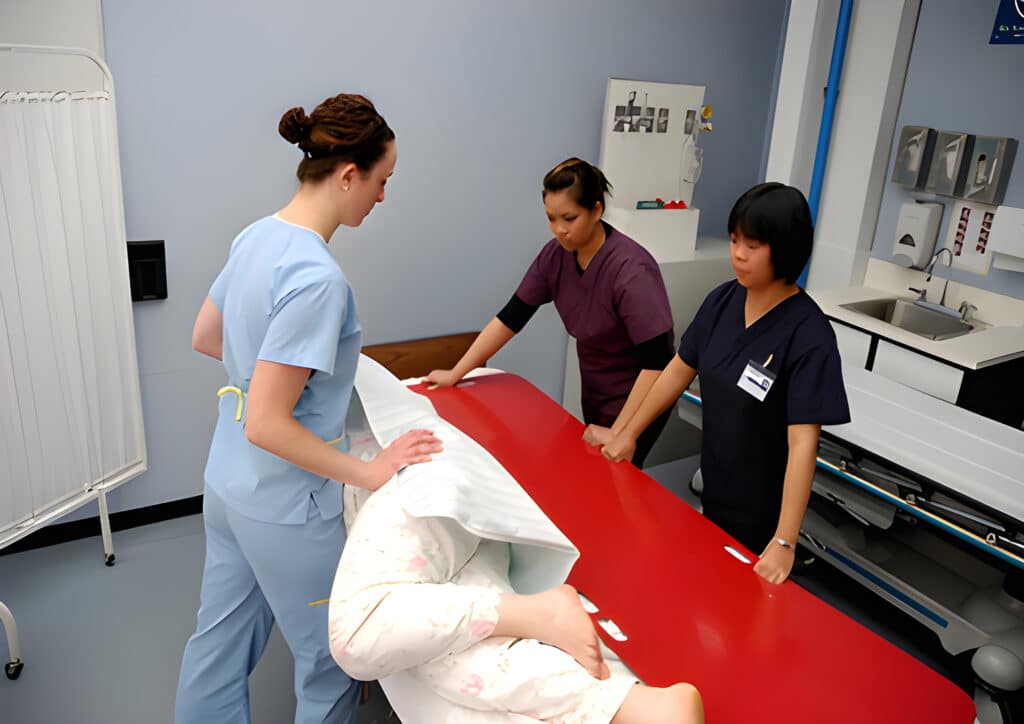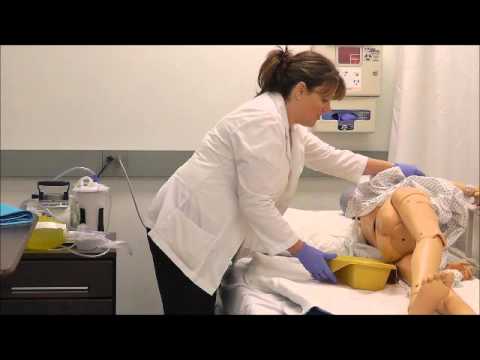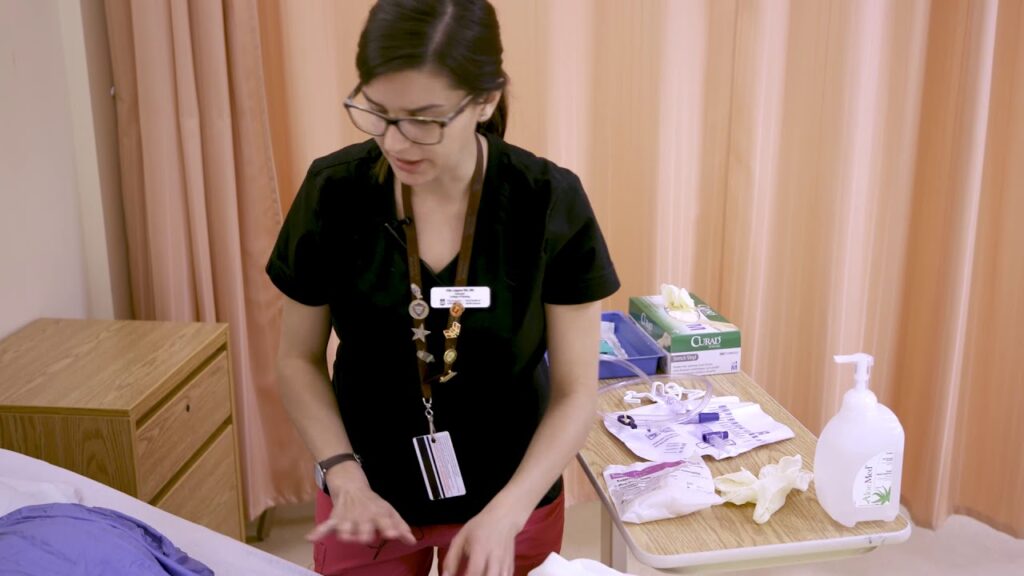Written by Amanda R. McDaniel, MS, BSN, RN
Amanda is a BSN/RN with a MS in Physiology and a BA in English. She worked as a medical writer in the pharmaceutical industry for 11 years before pursuing a career in nursing. She now works as a nurse on a NeuroTelemetry unit and continues to write and edit on a freelance basis. Amanda’s LinkedIn
Logrolling is a technique used to roll a resident onto their side without the resident helping, and while keeping the resident’s spine in a straight line. This is especially important for residents who have had spinal surgery or injury.
Logrolling Technique
- Safe logrolling requires three people. This prevents injury to the resident and to the healthcare workers.
- Two workers should stand on the side of the bed the resident is being rolled toward. One should stand on the opposite side.
- Raise the bed to a comfortable working height.
- Make sure that the draw sheet is under the resident and extends at least from the resident’s shoulders to their knees.
- Have the resident cross their arms over their chest and place a small pillow between their knees.
- The worker on the side the resident is being turned away from should fanfold the draw sheet until it is close to the resident.
- One worker on the side the resident is turning to face should grasp the fan-folded draw sheet at the resident’s lower back and shoulder. The other worker should grasp the draw sheet at the level of the resident’s lower hips and thighs.
- On the count of three, the two workers holding the draw sheet should pull toward themselves in a continuous, smooth motion.
- The worker now äóìbehindäó the resident should support the resident’s head in line with their body and immediately place a pillow under the resident’s head. If the resident is to stay on their side, this worker should place pillows along the resident’s back to help support them in that position.
- The workers holding the draw sheet should gently release the tension so that the resident rolls back onto the pillows.
- Ask the resident if they are comfortable. Make adjustments as necessary.
- Lower the bed back to the lowest position.
- Document the position per institutional or unit policy. Report any difficulty getting the resident into position, or maintaining position to the nurse per policy.
References
Activity and mobility. (2014). In A. G. Perry, P. A. Potter, and W. R. Ostendorf (Eds), Clinical nursing skills & techniques (8th ed., pp. 217). St. Louis, MO: Mosby Elsevier.

